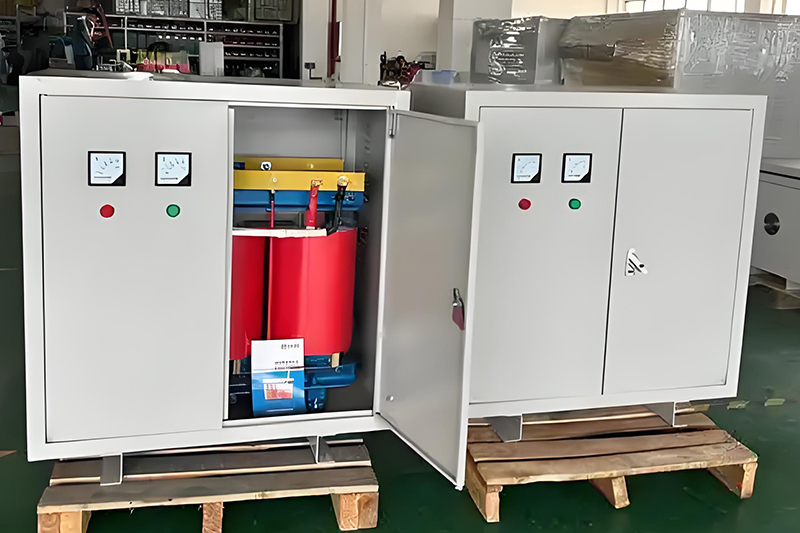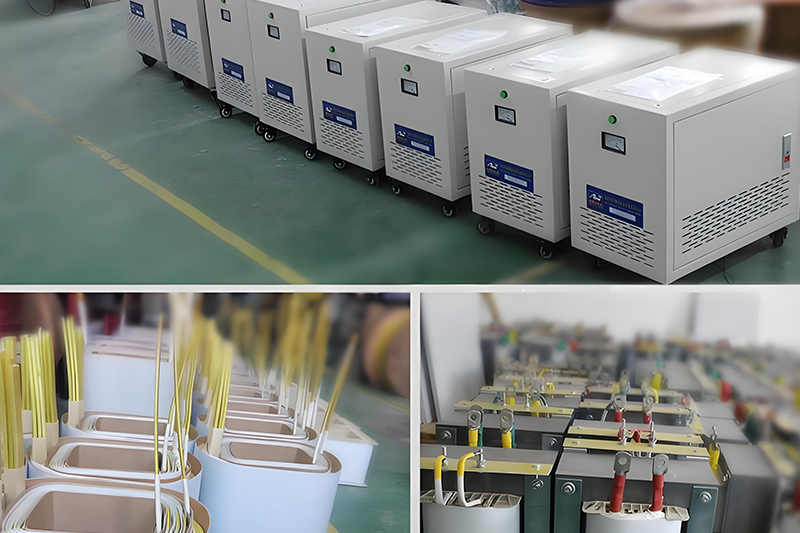Top Noise Sources in Isolation Transformers and How to Reduce Them
In noise-sensitive environments such as medical facilities, laboratories, and data centers, the acoustic performance of isolation transformers plays a critical role in ensuring a quiet and stable working atmosphere. Excessive noise can interfere with equipment operation, compromise measurement accuracy, and negatively impact human well-being. Therefore, understanding the major noise sources in isolation transformers and applying appropriate control measures is essential for optimized performance.

Primary Noise Sources in Isolation Transformers
1. Core Vibration
The transformer's core, made of silicon steel laminations, experiences magnetostriction under alternating magnetic fields. This phenomenon causes slight periodic dimensional changes that result in mechanical vibrations at the excitation frequency, producing audible noise. The degree of noise is significantly influenced by the magnetostrictive properties of the silicon steel and structural design factors, such as core mass and window height-to-diameter ratio.
2. Winding Vibration
When current passes through the transformer windings, it generates electromagnetic forces that cause the windings and associated structures to vibrate. These vibrations lead to a second major source of noise. Notably, the acoustic power is proportional to the square of the vibration amplitude, which in turn is influenced by the square of the current. Although the load current has limited effect, the magnetic flux density and core magnetic properties are critical contributors to this form of noise.
3. Additional Contributing Factors
Cooling system components such as fans and pumps can generate vibrations that are transmitted through the insulation oil and mounting hardware. Additionally, tank wall vibration caused by stray magnetic flux from the load current may also contribute to the overall noise profile of the transformer.
Effective Solutions for Transformer Noise Reduction
1. Minimize Electromagnetic Interference
Installing electromagnetic shielding around isolation transformers helps block external electromagnetic noise and prevent the emission of transformer-generated interference. This greatly enhances the surrounding electromagnetic environment and reduces noise propagation.
2. Improve Acoustic Insulation
Applying high-performance soundproofing materials around the transformer or enclosing it within an acoustically treated cabinet effectively reduces the transmission of structural and airborne noise. Depending on the installation scenario, different materials and enclosure designs can be chosen to achieve desired noise reduction levels.
3. Optimize Mechanical Design
During the design stage, careful attention to the structural layout can significantly reduce vibration. For example, enhancing the mounting method of cores and windings, using damping supports, and minimizing mechanical contacts between moving components can reduce noise emissions caused by mechanical interaction and vibration.

Routine Maintenance to Support Noise Control
1. Scheduled Cleaning
Regular cleaning of both internal and external surfaces ensures there is no buildup of dust or debris that could hinder heat dissipation or insulation performance. Clean systems are less prone to overheating and vibration-induced noise.
2. Structural Inspections
Frequent inspection of components such as clamps, winding supports, and electrical joints can reveal signs of wear, looseness, or deformation. Prompt repairs and replacements help maintain mechanical stability and reduce secondary noise sources.
3. Mechanical Maintenance
Timely lubrication and adjustment of mechanical elements ensure smooth operation and prevent mechanical failures. Well-maintained systems are less likely to produce excessive noise or suffer premature degradation.
Effective noise control in isolation transformers requires a comprehensive approach, addressing core vibration, winding vibration, and auxiliary system-induced noise. By combining targeted engineering measures with ongoing maintenance, transformer noise can be significantly reduced, extending equipment lifespan and enhancing performance in sound-sensitive environments. When selecting or designing transformers for critical applications, noise management should be an integral part of the planning and implementation process.
- more+releated article
- 2025-10-21Application of K Factor Transformer
- 2025-10-21Detailed explanation about transformer model w
- 2025-10-2010kV Oil-Immersed Transformer Safety: Lightnin
- 2025-10-20What are The Advantages of Phenolic Cotton Clo
- 2025-10-17Are Three-Phase Isolation Dry-Type Transformer
- 2025-10-17G10 Epoxy Sheet: Choosing the Right Specificat
- 2025-10-1610kV Oil-Immersed Transformer Operation Inspec
- 2025-10-163240-B Epoxy Phenolic Glass Fiber Cloth Lamina
- 2025-10-15G10 Epoxy Sheet: The Preferred Insulation Mate
- 2025-10-15Analysis of Energy-Saving and Noise Control Te





